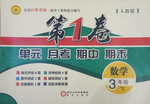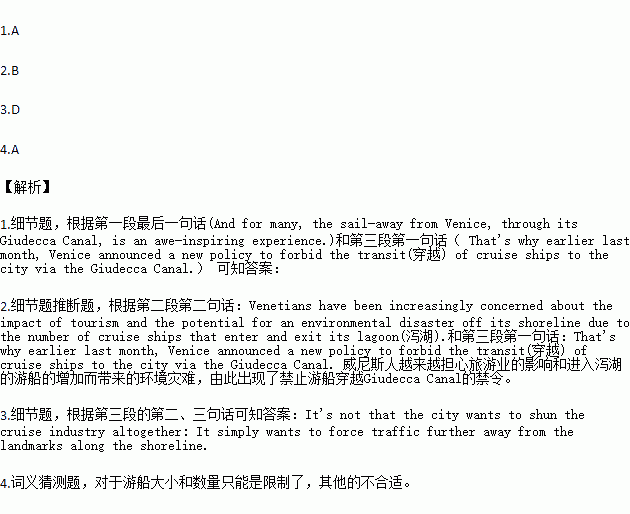题目内容
When travelers think of an Adriatic cruise, scenes of Venice, Italy—its canals, bridges, piazzas, and stunning architecture—come to mind. It's one of the most popular cruise destinations in Europe. And for many, the sail-away from Venice, through its Giudecca Canal, is an awe-inspiring experience.
Venice may be known as La Serenissima, or "the most peaceful," which, however, isn't entirely accurate these days. Venetians have been increasingly concerned about the impact of tourism and the potential for an environmental disaster off its shoreline due to the number of cruise ships that enter and exit its lagoon(泻湖).
That's why earlier last month, Venice announced a new policy to forbid the transit(穿越) of cruise ships to the city via the Giudecca Canal. It's not that the city wants to shun the cruise industry altogether: It simply wants to force traffic further away from the landmarks along the shoreline. City officials say that most ships will now transit the Contorta Sant'Angelo Canal.
Additionally, the city is clamping down on the size of ships that can visit Venice, as well as the total number of ships that call on it on a daily basis. As of January 2014, Venice plans to reduce the visitations of larger ships (those that are 40,000 tons or heavier) by 20 percent. This effectively caps the number of ships that can enter per day to five. In November, ships heavier than 96,000 tons will not be allowed to enter Guidecca Canal at all.
How the city plans to carry out the new five-ships-per-day rule remains to be seen and have yet to be announced. Which ships will be allowed passage? Will it be first-come, first-served? However they proceed, cruise line executives want their passengers to know that Venice will remain a regular port of call—even if the transit to and from the city must evolve.
1.Before last month, toursits left Venice by ship through ______.
A. the Giudecca Canal
B. La Serenissima
C. the Contorta Sant'Angelo Canal
D. the Adriatic Sea
2.The new policy was issued in order to_____________.
A. stress the accuracy of Venice's fame for peace
B. reduce the damage to Venice's environment
C. depend less on the crusie industry
D. limit the number of tourists
3.It can be learned from the passage that _____________.
A. People in Venice are complaining about the toursits' behaviors.
B. Venetians are often bothered by noise and pollution.
C. The city government has announced the concrete ways to carry out the new five-ships-per-day rule.
D. The new policy will not discourage the tourism from developing.
4.What does the underlined phrase "clapming down on" mean?
A. limiting B. abandoning
C. banning D. punishing
 第1卷单元月考期中期末系列答案
第1卷单元月考期中期末系列答案
